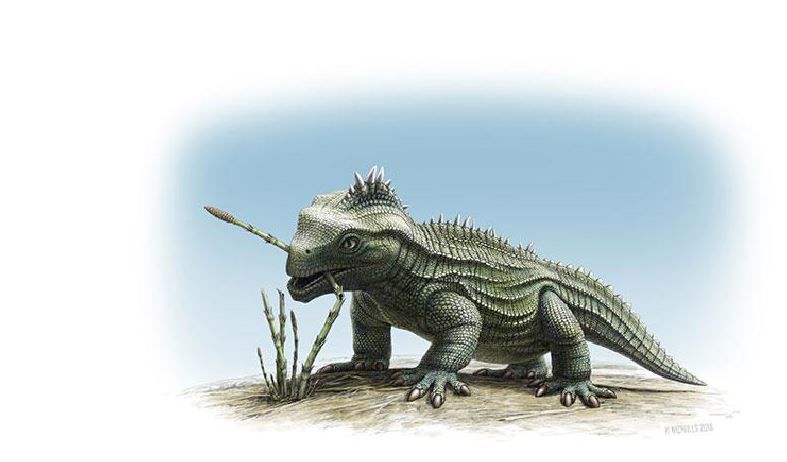Some information may be outdated.
Eilenodon was a plant-eating reptile that lived with the dinosaurs of North America during the Late Jurassic Period; it was a contemporary of dinosaurs such as Stegosaurus and Brontosaurus, and has been found in Grand County, as well as in Colorado.
A multi-institutional team of researchers has found in a recent study that the teeth of some ancient reptiles, including Eilenodon, had tooth enamel of varying thickness that was probably developed to help shear plant material in these relatively large, herbivorous lizard-like animals.
Eilenodon would have looked similar to a large, beefy modern-day lizard. Eilenodon’s only living descendant is the tuatara, a reptile species today found only in New Zealand. Tuatara are rare, and of great interest to scientists, as they are the last members of the order Rhynchocephalia. Eilenodon is larger than most contemporary rhynchocephalians and has robust, usually heavily worn teeth.
The study, published last week in the Journal of the Royal Society Interface, was conducted by a 10-person, international team from seven institutions, including the Museum of Moab and the Denver Museum of Nature and Science. The team investigated the internal structure of the teeth of Eilenodon to determine the relative thickness of the tooth materials dentine and enamel, something that had never been studied in this animal.
The team was led by paleontologist Marc Jones of The Natural History Museum in London.
“Studying teeth can tell us more about an animal’s diet, developmental history and relationship to other animals,” Jones said. “It was fascinating to be able to see inside this tooth and learn more about how its owner might have lived.”
The thickness of enamel (the hard shell on the outside of a tooth) can provide an insight into how a tooth formed and what kind of material an animal ate.
Eilenodon had rows of closely packed teeth and strong jaws for chewing and shredding plants. It would have eaten a range of herbaceous plants, rushes and shrubs that were rich in protein and easy to digest, plus the occasional insect.
To examine the tooth, the scientists used a neutron scanner, which helps to figure out what an object is made of. It allowed them to make a 3D “map” of the enamel inside the tooth. In a process that took 36 hours to complete, Jones and his colleagues scanned an unworn tooth that came from the left jaw of an Eilenodon collected in Colorado in the 1990s. They found that the enamel inside Eilenodon’s tooth was thick around the base to stop it fracturing, but thin at the tip to allow it to wear and become sharp enough for shredding plant material such as horsetails and ferns.
The team also found that this tooth differed from those of other extinct animals that were closely related to Eilenodon. For instance, it had thicker enamel than its relative, the modern day tuatara (Sphenodon), suggesting that these animals ate different foods.
Western Colorado paleontologist Lance Eriksen previously found another jaw of Eilenodon in the Morrison Formation near Westwater in the early 1980s.
Museum of Moab partners with international team in study
Appreciate the coverage? Help keep local news alive.
Chip in to support the Moab Sun News.





